This website uses cookies so that we can provide you with the best user experience possible. Cookie information is stored in your browser and performs functions such as recognising you when you return to our website and helping our team to understand which sections of the website you find most interesting and useful.
Automation Critical to Back-Office Job Retention (10 Research Stats)
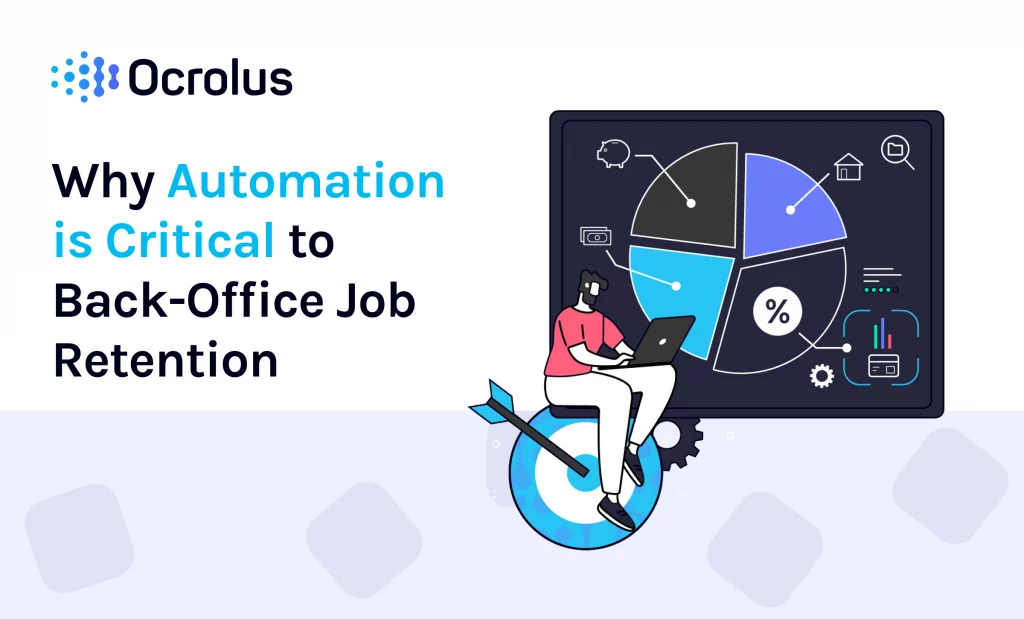
Automation is rapidly changing many different functions in many different businesses with back-office processing leading the way. Machines are becoming more efficient and as they do, humans will be relied upon less and less to do data entry and other rote administrative tasks. Instead more jobs will emphasize the value and scalability of critical decision making. This means that businesses that fail to automate will be at a recruiting disadvantage compared to organizations that have taken away those less desirable parts of the job.
In fact, the Great Resignation has already demonstrated employee discontent in action and the importance of employee retention. Workers are leaving their jobs at increasing rates, recognizing that they have other options, and what’s more, plenty of them. They no longer feel compelled to stay in a job they’re unhappy doing, instead opting for positions that offer more attractive compensation, perks, and support.
In the financial industry, this means jobs that are implementing automation that takes the burden of rote, repetitive tasks and places them with machines while leaving humans to do that part of the job they do best. This could be underwriters being able to capture loan applications automatically or it could be computer-driven document fraud review.
To better understand these shifting market dynamics, Ocrolus conducted a survey of organizational leaders, asking them about the status and direction of their business’s back-offices. The survey included responses from over 400 professionals with management roles regarding employee hiring and turnover in the past 12 months. For the purposes of this report, ”back-office” is defined as ‘an office or center in which the administrative work of a business is carried out.’ These tasks include records maintenance, settlements, accounts payables, and accounts receivables, to name a few.
While the answers trended largely in the expected direction given current hiring challenges, they also illustrate exactly where companies may be going wrong in their business automation efforts and how they can foster employee retention among their back-office teams.
The state of business’ back-office hiring
In the current environment, there is a shortage of talent and a surplus of positions. This means back-office workers don’t need to “tough it out” in a job they don’t enjoy because they know a multitude of other positions are available. When surveyed, over 40% of management respondents said they had 11% or more of their business back-office roles vacant, with an additional 23% having 6-10% of their back-office roles empty.
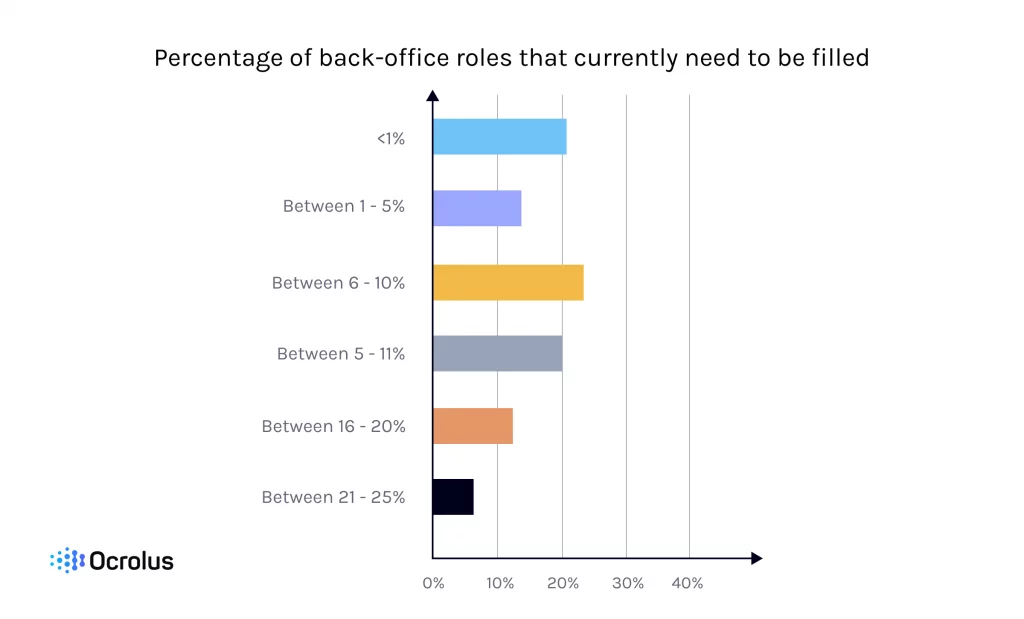
Furthermore, once employees see someone else being successful in a departure, there can be a herd mentality with multiple key employees leaving at once. Not only are these shortages prevalent, but a company can go very quickly from full operating capacity to critical levels, especially if they’re not investing in retaining top talent.
Why is turnover so high?
Not surprisingly, most people are motivated by compensation; over 35% of those surveyed believe their back-office workers were resigning over salary. However, that statistic alone does not tell the entire story. While many workers are highly motivated by salary, the fact that demand is so high has allowed them the opportunity to be more picky. Not only are they looking for better compensation, but they can afford to look for companies offering more comprehensive benefits and more supportive working conditions.
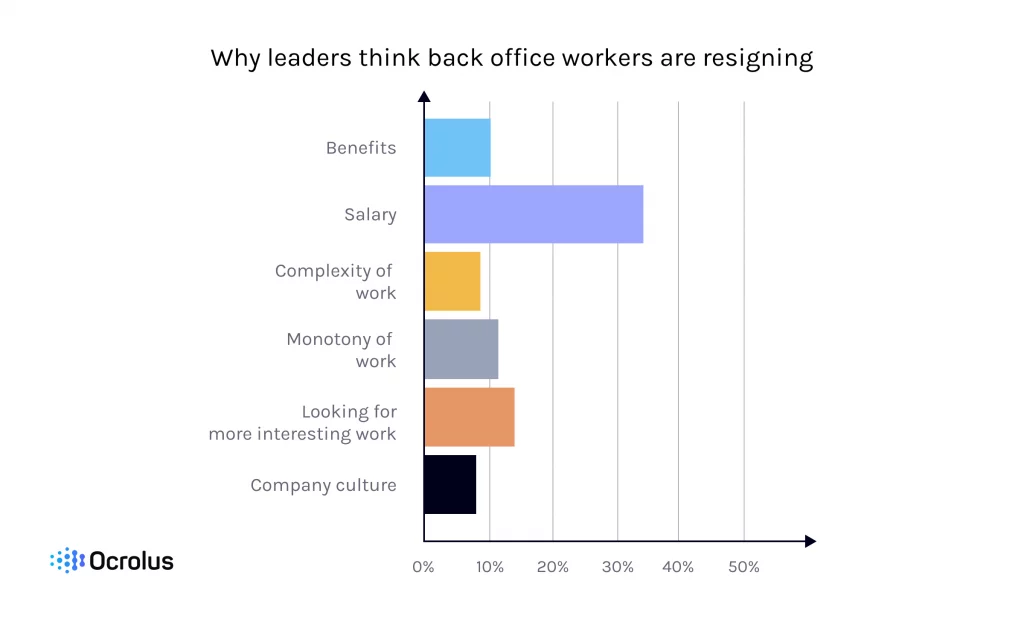
Over 15% of respondents believe the primary reason their employees leave is that they are looking for more interesting work; a further 12% believe employees resign due to work monotony. Beyond salary, most employers recognize that employees want work that engages them. While some work is destined to be repetitive, this does not have to be the case with back-office positions. Automation can alleviate much of the mentally taxing portions of the job, leaving humans to focus on what they do best.
The effects of back-office staffing shortages
The effects of staffing shortages can be seen in three key areas: difficulty scaling, difficulty retaining top talent, and a reduction in the quality of work.
Difficulty scaling
The ability to hire back-office staff has become significantly more difficult. 50% of those surveyed said hiring has become more or significantly more difficult over the last 12 months. Not only are employees leaving jobs at alarming rates but it is becoming harder to replace them as the number of available positions continues to swell.
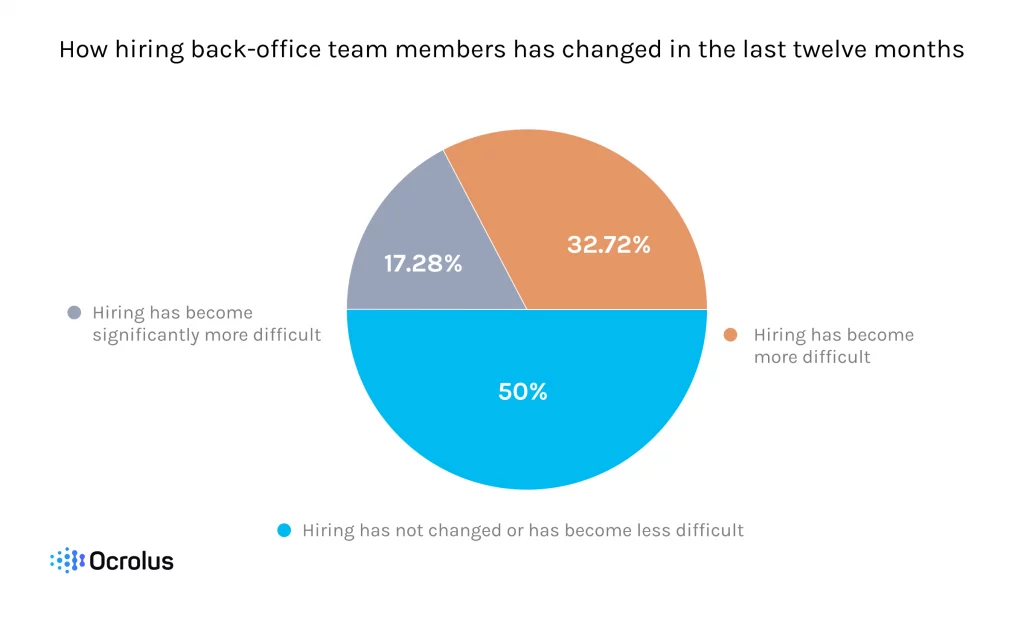
Along with meeting current needs, many companies are actively scaling up to meet growing business demands. Over 50% of those surveyed reported a need for more back-office staff. As business volume grows, so will the need for greater processing power. For companies that are not investing significantly in automation, that means more hard-to-land staffing.
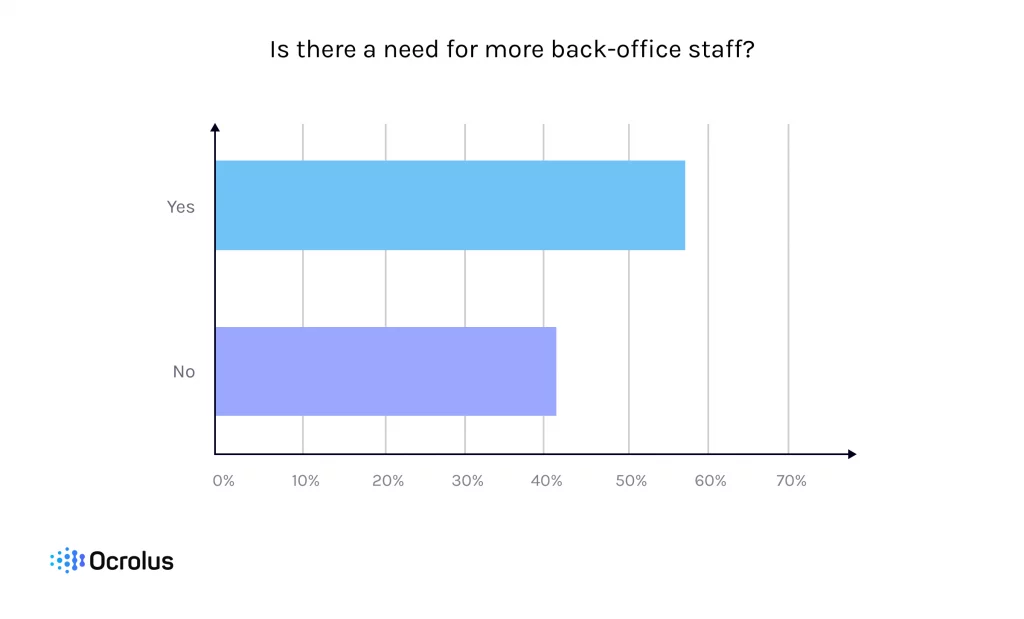
Difficulty retaining top talent
Inability to find enough talent is only half of the equation; retaining productive employees is equally important. With back-office jobs, burnout is common as detail-oriented, tasks are often overwhelmingly repetitive. While many rote tasks can be alleviated through automation, some companies are hesitant to fully automate. In fact, a recent report from UiPath and Bain & Company outlined that while 86% of employees want to use automation, only 30% of business leaders have granted access to it.
This is clearly reflected in the inability of businesses to retain back-office staff. The Ocrolus survey showed nearly 50% of respondents indicated turnover was increasing or significantly increasing over the past 12 months. This means on top of being short-staffed, companies are forced to spend more resources finding, hiring, and training new employees.
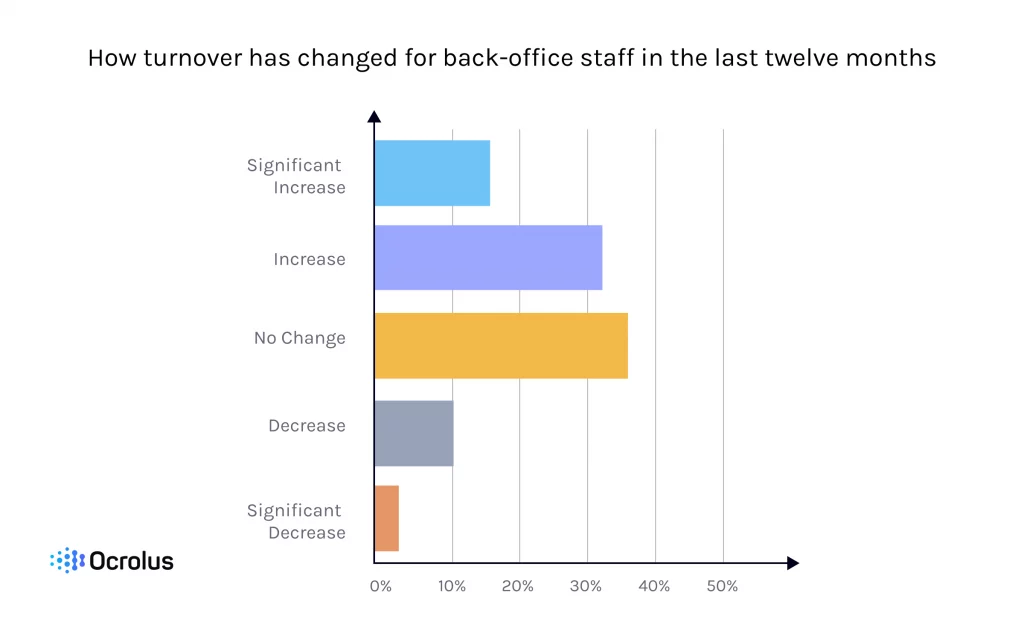
In fact, not only is turnover increasing, but employee tenure is trending shorter. The survey revealed that nearly 20% of employees leave within one year, and a further 38% leave within three. That means retraining over half of your workforce every three years. This can have a major toll on departmental costs and efficiency, not to mention staff morale.
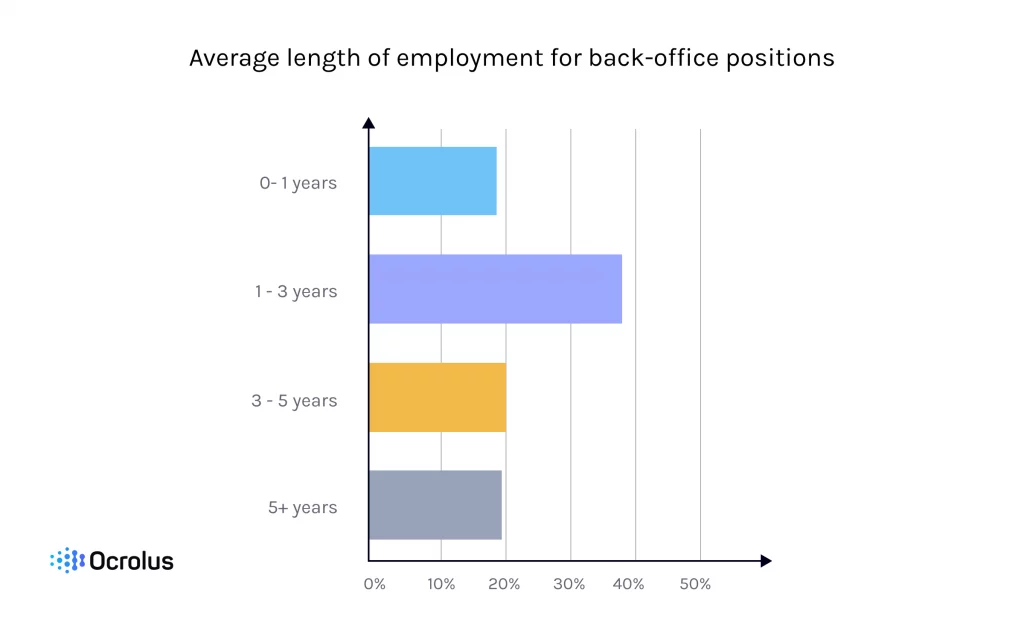
Reduction in quality of work
Businesses are struggling to meet current staffing needs, let alone scale, and as business volumes rise. Over 45% of respondents said the lack of staffing had lowered their efficacy at conducting business and caused issue resolution times to be slower; companies are doing less work, less well with every back-office employee they lose.
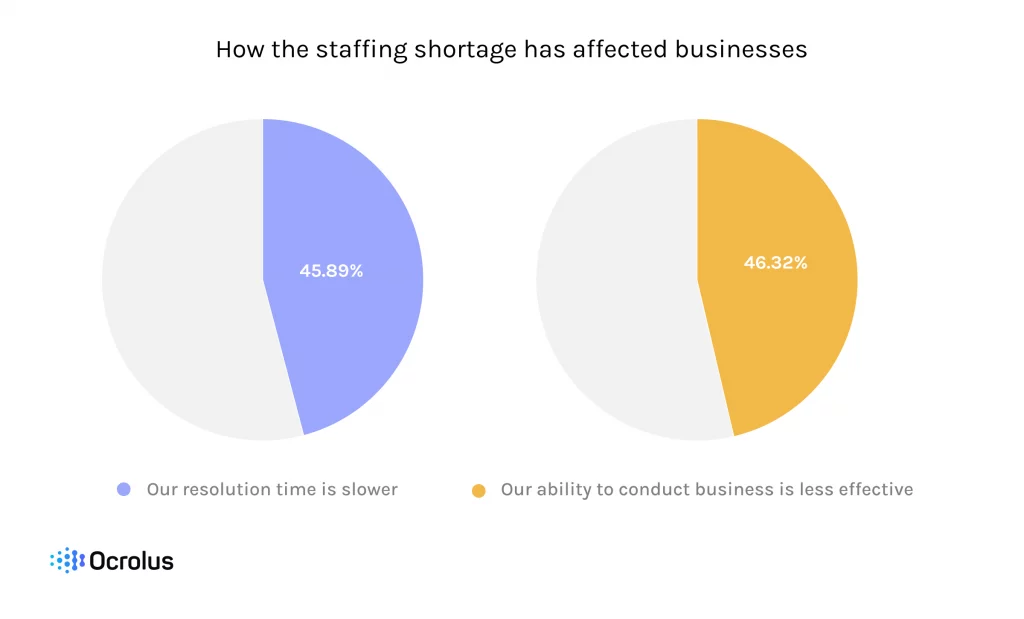
Nearly 40% of respondents said they were forced to pay overtime to meet workloads. While overtime is not inherently bad, it is not a replacement for a full staff and can quickly lead to higher costs and employee burnout. Nearly 35% of respondents also said their work results have been less accurate, a clear sign of rising human error and burnout.
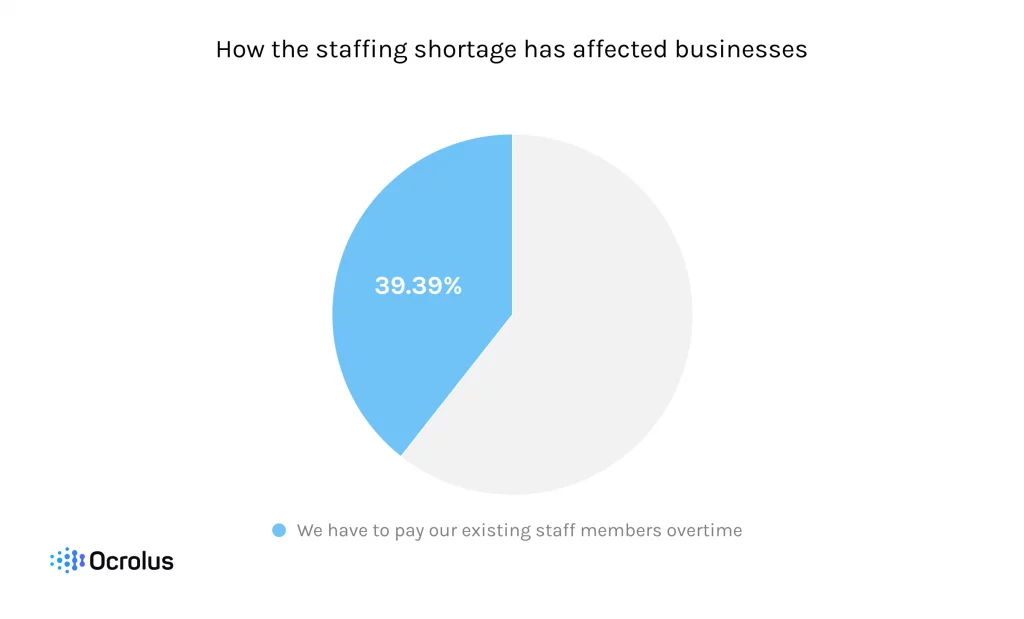
The cost of high turnover
Turnover can have far-reaching effects on overall business productivity. Ideally, companies should focus on retaining employees. According to Built In, it’s estimated that losing an employee can cost a company 1.5-2 times the employee’s salary.
Beyond outright salary costs, there’s a large amount of time value lost with the onboarding of new employees. Back office operations can be especially hard hit by time value as these jobs require a lot of attention to detail. Almost 50% of respondents said it took over a month for a new hire in the back office to be fully trained. This of course doesn’t include the time other employees need to take away from their own jobs to help train new hires.
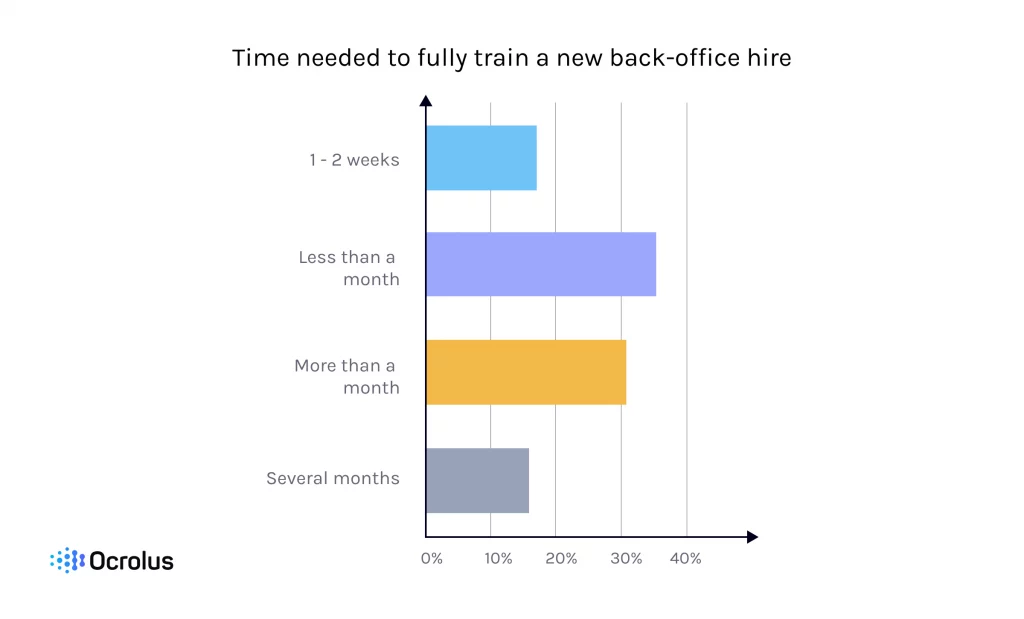
Where can automation make a difference?
When surveyed, the top three functional areas identified as impacted by employee turnover were customer service, data entry, and document processing.
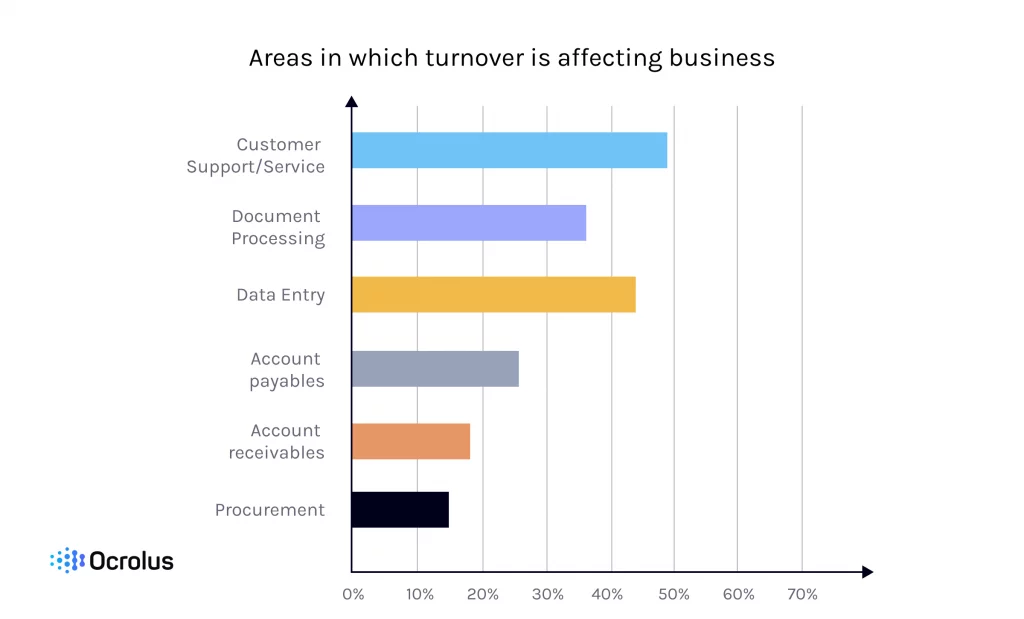
These three areas also happen to be where businesses are attempting automation. Chatbots and automatic texting services are making a huge difference with customer service channels. Meanwhile, automatic document processing and analysis programs along are helping to alleviate the burden of data entry.
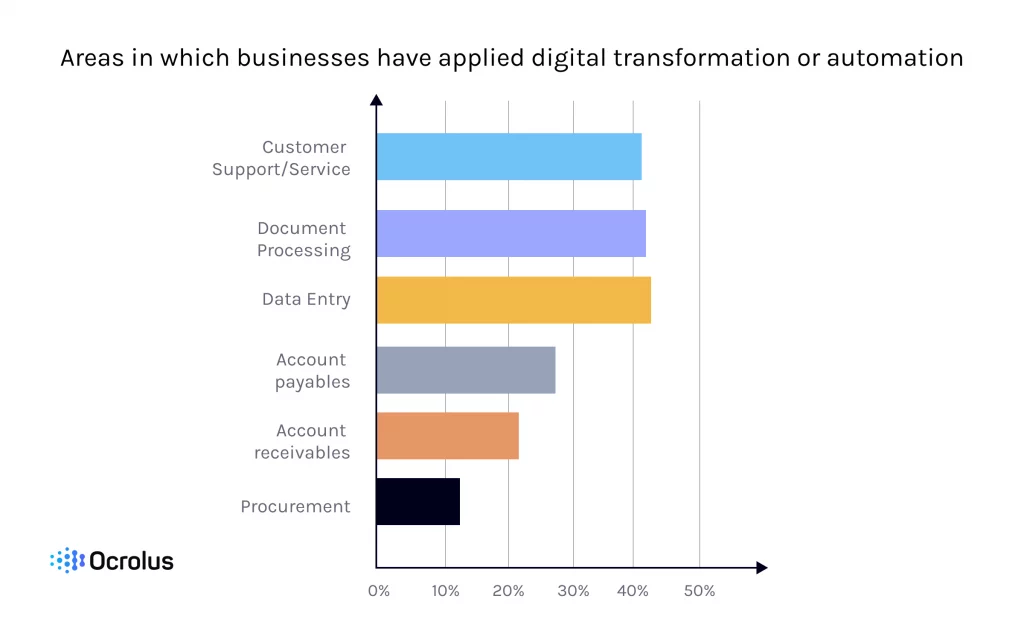
In the face of the Great Resignation, it is more important than ever for companies to think about what can make jobs more appealing to current and future employees and improve employee retention.
Automation initiatives have often been met with trepidation. People are unsure if the results will be accurate or if it will replace the jobs of humans. Despite these automation myths, the truth is there is a long history of automation taking over less desirable jobs in society. Consider much of the repetitive factory work of the last century, now almost completely operated by machines. While jobs were lost, many new jobs were created through organizational efficiency.
Companies that are fighting back-office turnover need to consider not only salary but the other benefits, namely providing interesting work that motivates people. While automation is not a comprehensive solution, it is a cornerstone strategy that can produce big changes quickly and greatly improve employee retention.
If you’d like to learn more about how intelligent document automation can help improve your back-office and overall workflows, schedule a demo of Ocrolus today.





